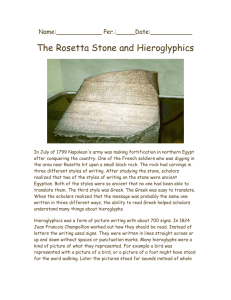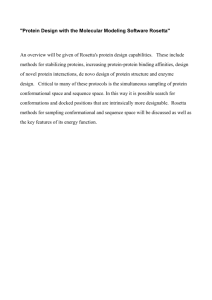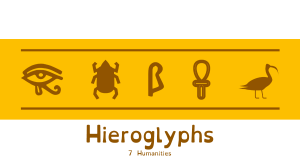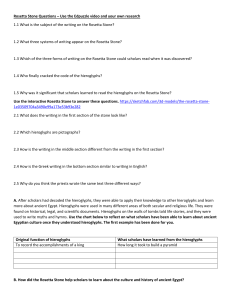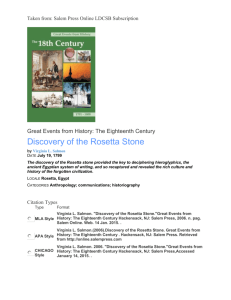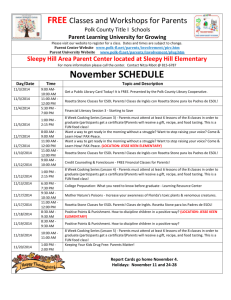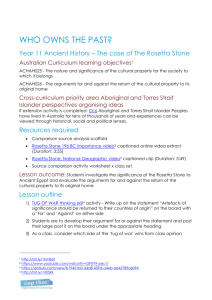The Rosetta Stone
advertisement
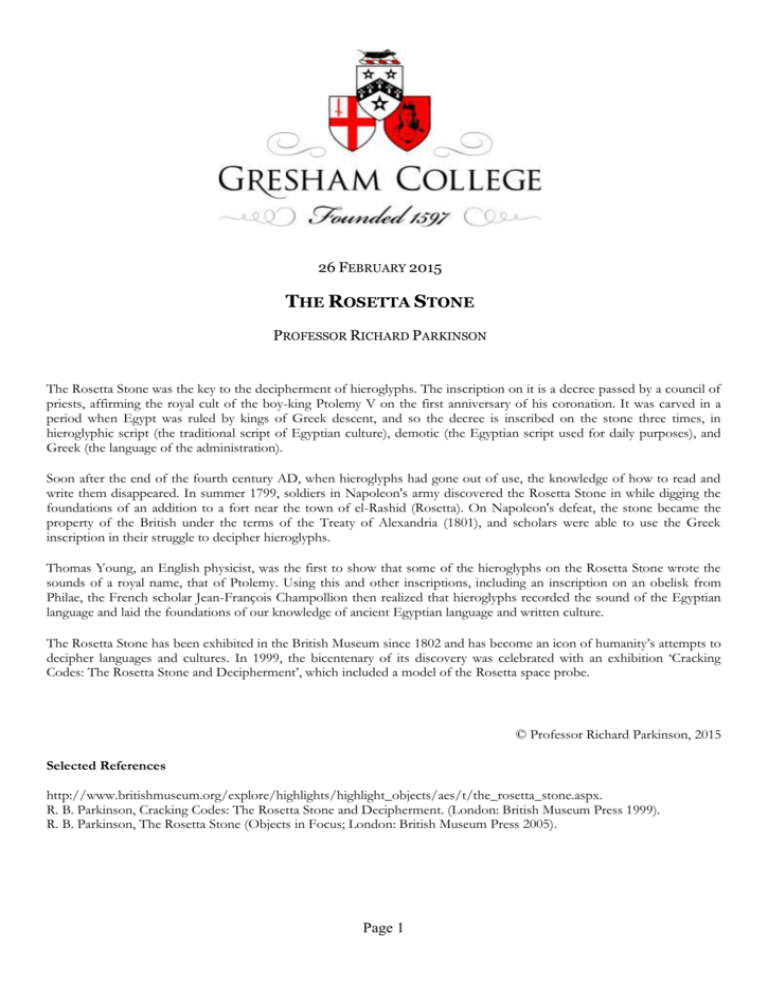
26 FEBRUARY 2015 THE ROSETTA STONE PROFESSOR RICHARD PARKINSON The Rosetta Stone was the key to the decipherment of hieroglyphs. The inscription on it is a decree passed by a council of priests, affirming the royal cult of the boy-king Ptolemy V on the first anniversary of his coronation. It was carved in a period when Egypt was ruled by kings of Greek descent, and so the decree is inscribed on the stone three times, in hieroglyphic script (the traditional script of Egyptian culture), demotic (the Egyptian script used for daily purposes), and Greek (the language of the administration). Soon after the end of the fourth century AD, when hieroglyphs had gone out of use, the knowledge of how to read and write them disappeared. In summer 1799, soldiers in Napoleon's army discovered the Rosetta Stone in while digging the foundations of an addition to a fort near the town of el-Rashid (Rosetta). On Napoleon's defeat, the stone became the property of the British under the terms of the Treaty of Alexandria (1801), and scholars were able to use the Greek inscription in their struggle to decipher hieroglyphs. Thomas Young, an English physicist, was the first to show that some of the hieroglyphs on the Rosetta Stone wrote the sounds of a royal name, that of Ptolemy. Using this and other inscriptions, including an inscription on an obelisk from Philae, the French scholar Jean-François Champollion then realized that hieroglyphs recorded the sound of the Egyptian language and laid the foundations of our knowledge of ancient Egyptian language and written culture. The Rosetta Stone has been exhibited in the British Museum since 1802 and has become an icon of humanity’s attempts to decipher languages and cultures. In 1999, the bicentenary of its discovery was celebrated with an exhibition ‘Cracking Codes: The Rosetta Stone and Decipherment’, which included a model of the Rosetta space probe. © Professor Richard Parkinson, 2015 Selected References http://www.britishmuseum.org/explore/highlights/highlight_objects/aes/t/the_rosetta_stone.aspx. R. B. Parkinson, Cracking Codes: The Rosetta Stone and Decipherment. (London: British Museum Press 1999). R. B. Parkinson, The Rosetta Stone (Objects in Focus; London: British Museum Press 2005). Page 1
